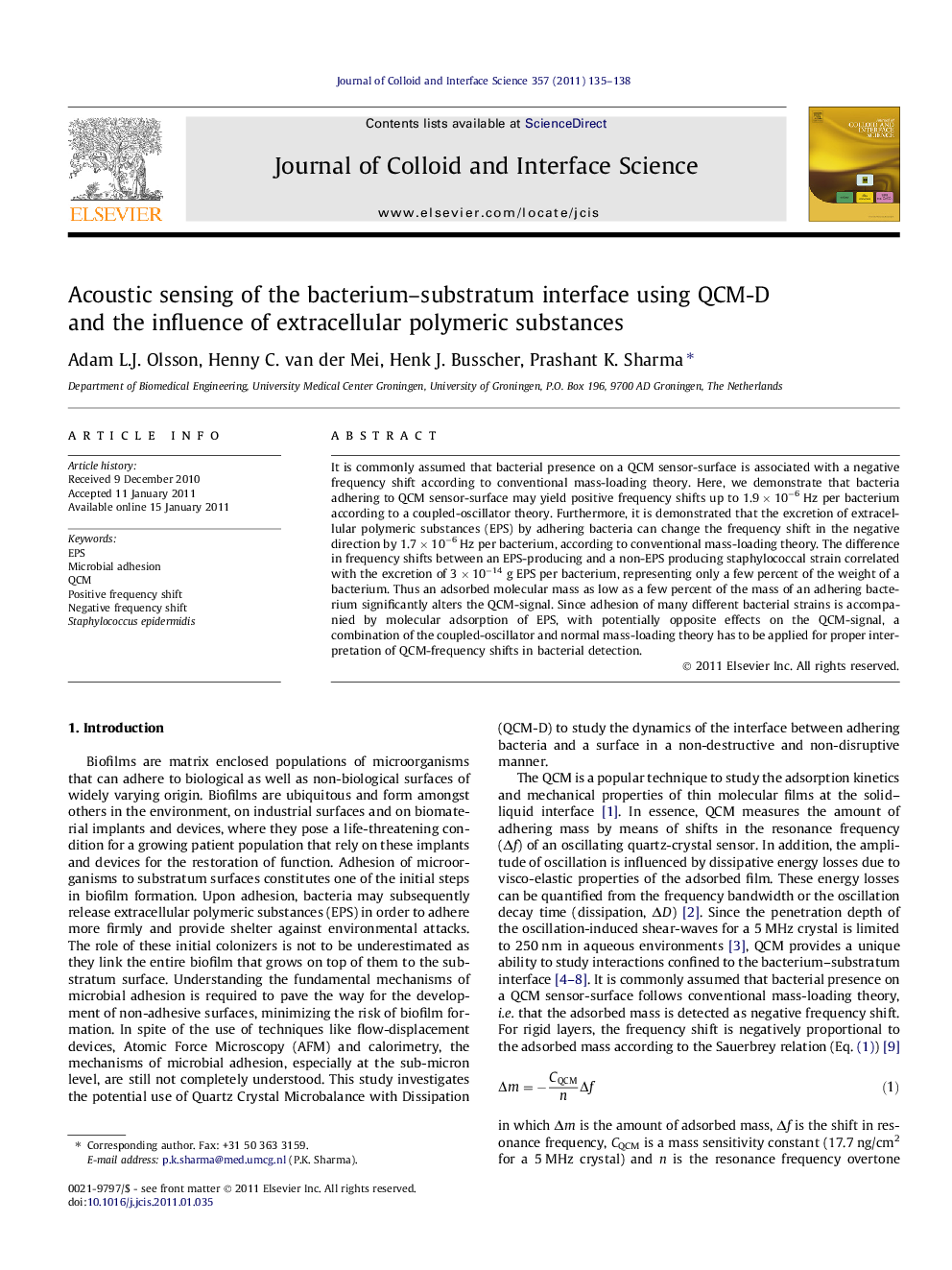| کد مقاله | کد نشریه | سال انتشار | مقاله انگلیسی | نسخه تمام متن |
|---|---|---|---|---|
| 608558 | 880602 | 2011 | 4 صفحه PDF | دانلود رایگان |

It is commonly assumed that bacterial presence on a QCM sensor-surface is associated with a negative frequency shift according to conventional mass-loading theory. Here, we demonstrate that bacteria adhering to QCM sensor-surface may yield positive frequency shifts up to 1.9 × 10−6 Hz per bacterium according to a coupled-oscillator theory. Furthermore, it is demonstrated that the excretion of extracellular polymeric substances (EPS) by adhering bacteria can change the frequency shift in the negative direction by 1.7 × 10−6 Hz per bacterium, according to conventional mass-loading theory. The difference in frequency shifts between an EPS-producing and a non-EPS producing staphylococcal strain correlated with the excretion of 3 × 10−14 g EPS per bacterium, representing only a few percent of the weight of a bacterium. Thus an adsorbed molecular mass as low as a few percent of the mass of an adhering bacterium significantly alters the QCM-signal. Since adhesion of many different bacterial strains is accompanied by molecular adsorption of EPS, with potentially opposite effects on the QCM-signal, a combination of the coupled-oscillator and normal mass-loading theory has to be applied for proper interpretation of QCM-frequency shifts in bacterial detection.
Adsorbed mass at a liquid–solid interface can be accurately registered by QCM-D as a negative frequency shift. Often adhesion of colloids causes positive frequency shifts, indicating mass loss according to the Sauerbery equation. During bacterial adhesion, colloidal adhesion and molecular adsorption take place simultaneously. Point-contacts at a bacterium-sensor interface are here described as a spring with stiffness k, as per the coupled-oscillator theory while extracellular polymeric substances (EPS) behaves as an adsorbed mass. Accordingly, the amount of EPS involved in the adhesion of a single bacterium is estimated to correspond to only a few percent of the bacterial weight.Figure optionsDownload high-quality image (58 K)Download as PowerPoint slideResearch highlights
► Bacterial adhesion and EPS adsorption is studied using quartz crystal microbalance (QCM).
► Bacteria adhere as coupled oscillator on QCM sensor surface giving rise to positive frequency shift.
► EPS adsorption gives negative frequency shifts as per the normal mass loading theory.
► Amount of EPS, as quantified by QCM, was few percent of bacterial cell mass.
Journal: Journal of Colloid and Interface Science - Volume 357, Issue 1, 1 May 2011, Pages 135–138